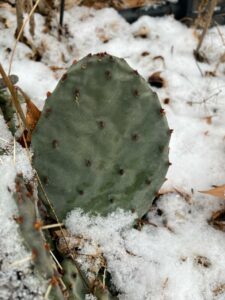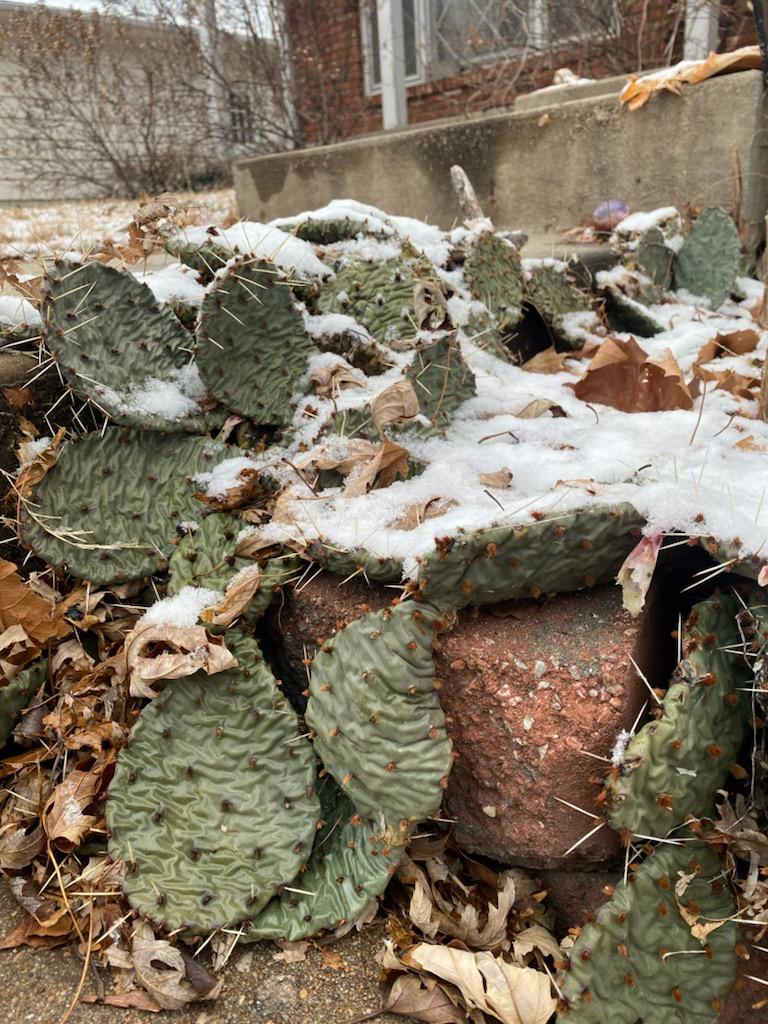I hear a lot during wintertime about excitement for vegetable seed catalogs coming in the mail. Did you know winter is a good time to start planning for a native plant garden as well? Whether you plan on growing from seeds or buying plants in the spring, adding a new flower garden or expanding an existing one, winter is the time to start prepping and planning! Just as vegetable and cultivar gardens, native plants require thoughtfulness in their execution.
A good first step is to determine where to plant and prep the site. Winter is the perfect time to kill grass and weeds. Laying down cardboard boxes on the new planting site is a labor-easy way to prep the area. The cardboard will begin to break down in the process making it easy to dig holes come spring.

By Ginger Werp. Ginger is a KC WildLands Program Coordinator at BTG.
Right species, right place! Do you have an area in the yard where nothing seems to thrive? Since native plants are adapted our area, they can grow in spaces nothing else can. Also, it may be hard to tell in winter, but knowing the amount of sunlight, or lack thereof, will be important when picking plant species. Native plants have a wide range of sunlight needs. Many do well anywhere they are put, but some are more specific. There are even some species that do well in pots. So even apartment dwellers can enjoy the beauty of native plants.
Another key in site selection is storm water management. Native plants have deep, intricate roots systems that can absorb large amounts of water. Installing a rain garden in these locations can aide in water purification. A rain garden can also help ease the maintenance of an always soggy lawn. If you live in Johnson County, the Contain The Rain program offers cost shares on native plants and trees just for this purpose! The winter months are the time to make your plan and apply for matching funds on native plants and trees.
If you have experience growing plants from seeds, purchasing seeds to start in trays and plant come spring can save a lot of money. Native plants need a cold stratification process to break dormancy and start germination. Since they are adapted to growing conditions here, stratifying seeds outside in trays or milk jugs fashioned into terrariums is a safe bet. Be sure to get genuine native plant seeds, staying clear of cultivars or nativars. I prefer purchasing plants from any of the many local native plant nurseries or at native plant sales in the spring and fall. This resource guide is chocked full of places to buy seeds and plants.
Native plants benefit the ecosystem and are food for wildlife, but they have countless benefits for us, too. Many native plants can also provide food for you! Consider adding some to your garden. Best part, most are perennials so they will come back year after year. There are many options outside of just fruits and nuts. Also, utilizing native plants to attract pollinators to your yard can help your fruit and vegetable gardens as well! Find ways to incorporate native companion plants into your vegetable garden. So while you are planning your veggies, plan on adding some native plants with them.
When we have breaks in the harsh winter weather, it is nice to get outside and warm up your green thumb. Use the time to remove invasive plants from your yard and plan on replacing them with something native. Not sure what is invasive? Check out this list to get you started.
Native plants like competition. Planting close together not only crowds out weeds, but it also helps to keep what some say are unruly plants in check. Plus, if you intentionally and strategically crowd plants together, mulch is not always necessary. Consider skipping pesticides all together. Not just in site prep but garden maintenance as well.
When choosing which species to plant, consider height, spread, color, and bloom time. Other characteristics to consider are winter interest, host plants, and preferred nectar sources. Birds depend on seeds from native plants year-round but especially in cold winter months. And if you plant them, they will come – research native bees, butterflies, and moths to see which ones you want to attract to your yard! It is also fun to have some “odd” choices. I really enjoy my prickly pear cactus patch, especially during the winter months!

Prickly pear cactus in snow

Cardboard leftovers used to kill grass

Don’t be afraid to plant natives in pots! (Shown: Fame flower)
New to native plants or having a hard time deciding on what to plant next? Use garden designs from Grow Native!, Contain The Rain, and Deep Roots. These organizations even have lists of native garden design experts available for hire, lists of native plant nurseries, online stores, and many other resources to help you plan and execute your native plant garden. I am a big fan of the Grow Native! Top 10 Lists.
Native plants are not no maintenance, but with proper planning they can be low maintenance gardens setting them and you up for success! During these cold months, look to the sunnier times and start planning your garden today.






